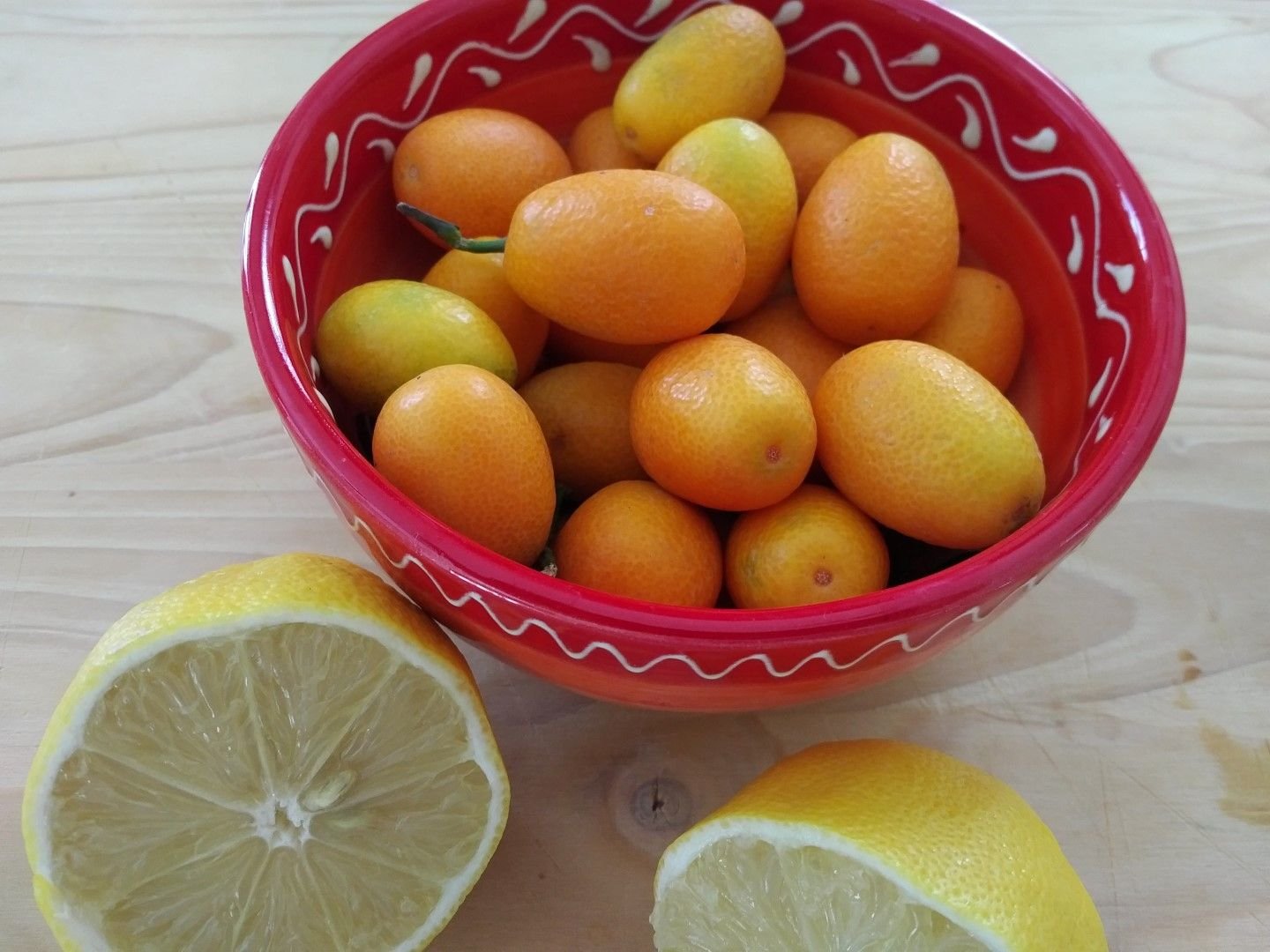If, like me, you love fruit, winter is a rather dull season where the seasonal variety often comes down to the same old apples, pears, oranges, mandarines, persimmon and the odd banana. Not exactly spoilt for choice, especially if you are trying to avoid imported exotic fruits from other climes. Whilst we all know that oranges are good for their vitamin C content and to help stave off colds, there is a small Asian fruit from the citrus family that few people know about, and fewer still know it as having one of the highest contents of vitamin C, far over that of its cousin the orange.
The origins of Kumquat
The kumquat or Citrus Japonica originates from Southeast Asia where several varieties can be found, such as the Fortunella Japonica and the Fortunella Margarita, to name the two most common ones found outside Asia. Although the Asians had been consuming kumquat for generations, it was only introduced into Europe in 1846 by Robert Fortune, a botanist and collector belonging to the London Horticultural Society. Despite its many benefits, this small elongated orange coloured fruit, characterised by a thick skin and predominantly tangy taste with a tinge of sweetness, is still a rare find in European green grocers’ and supermarkets. Its distinguishing feature, apart from its small size, is that unlike other citrus fruits, which are usually consumed once peeled, Kumquats are eaten whole.
The health benefits of citrus peels according to TCM
Interestingly, according to Traditional Chinese Medicine (TCM), citrus peel in general is full of health benefits which can help a number of different conditions. Generally speaking grapefruit peel, lemon peel, lime peel and orange peel move and regulate spleen-pancreas digestive energy helping to solve intestinal problems including gas and swelling, and can help promote peristalsis. The peel is also useful in helping alleviate lung congestions. Lemon peel in particular has a stronger ability for moving stagnant liver Qi, whereas lime peel is better suited to work on liver energy. Orange peel has similar properties to those of grapefruit peel as described above but can also be used to dissolve eye cysts by placing the white lining of the peel directly on the eyelid.
Most people, however, will find the taste of these peels too bitter to eat, and with the exception of kumquats, they tend to remove every single white filament off the fruit. To benefit from the many healing properties of citrus peel you can do one of two things: either use the peel of grapefruit, orange, lemon or lime, depending on your specific needs, and simmer them in water for about 20 minutes, then strain and drink (adding a little honey if necessary), or you can simply eat kumquats (their peel is sweet).
The nutritional benefits of kumquats
On a nutritional scale the kumquat contains the same kilocalories as grapes (approximately 71kcals per 100g), it is full of dietary fibre (6.7g per 100g of fruit, the equivalent of 17% RDA or recommended daily amount) minerals such as calcium and magnesium, vitamins including Thiamin (Vitamin B), vitamin C, iron, and antioxidants including carotenes, lutein and tannins. It is estimated that 100grams contribute approximately 73% of your RDA for Vitamin C, which is a huge amount for such a small fruit.
When it comes to Kumquats a large part of its nutritional benefits comes from the peel itself, which is sweeter than that of its cousins. This peel is rich in essential oils including limonene, pinene, a-bergamotene, caryophyllene, a-humulene and a-murolene.
*Limonene boosts immunity, improves gallbladder health, relieves indigestion, prevents cancer, fatty liver disease and insulin resistance, it kills pathogens helping to ward off infections, decreases anxiety and insomnia and helps to lower cholesterol.
*Pinene, a-bergamotene and caryophyllene are anti-inflammatories, and in addition pinene is broncodilator (ie it improves airflow to the lungs), counters short-terms memory loss and promotes alertness.
*As well as possessing anti-inflammatory properties, caryophyllene is an antibacterial and antimicrobial, it helps to improve mood and to prevent osteoporosis.
*Due to its high vitamin C content, kumquats also help the absorption of iron from food, since iron is more easily absorbed in the presence of vitamin C consumed at the same meal.
How to eat Kumquats
Personally I like to eat them as they come, simply washing them with a mixture of water and bicarbonate for 10 minutes (see how to do that here), then eating them whole. They make for a great snack on their own, but can also be used as a marinade for poultry, lamb and seafood dishes in much the same way you would use an orange; sliced into fruit salads or used in marmalades in lieu of bitter oranges. You could also use them to dip in a decadent chocolate fondue! - Now there’s an idea for the holiday season. - The choice is yours. Whatever you do, try them next time you see them in your local market, if only to break the monotony of other winter fruits.


